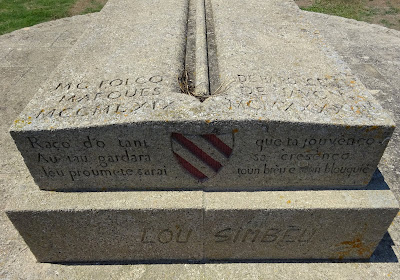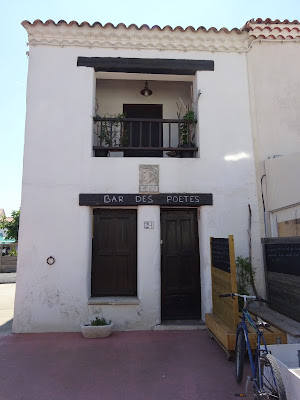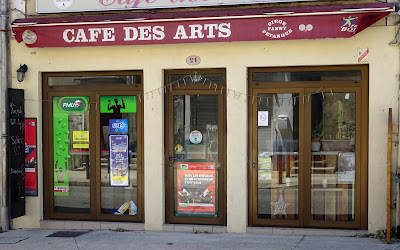Jacques Copeau (1879–1949), 'Homme de théâtre, metteur en scène, pédagogue, créateur du Théâtre du Vieux-Colombier, il est artisan d'une refondation de l'art dramatique.' That's quite an impressive list of things: essentially a man of the theatre, Jacques Copeau was a producer, teacher, the creator of the Théâtre du Vieux-Colombier (see elsewhere on this blog for that), and the architect of a rebirth in the dramatic art. In fact Albert Camus said there are two kinds of theatre: pre-Copeau, and post-Copeau.
What the above plaque doesn't say is that he assisted in the founding of La Nouvelle Revue française in 1909 with such people as Charles-Louis Philippe, Jean Schlumberger, Marcel Drouin, André Ruyters, Henri Ghéon and André Gide.
Copeau retired to Pernand-Vergelesses near Beaune in 1941, the same year that he wrote Le Théâtre populaire, which would influence Jean Vilar's idea of the theatre. Born in Beaune, he also died there. He is buried in the small cemetery in Pernand-Vergelesses. Today his house there is a 'laboratoire de la création'. Unfortunately we were heading back to England and didn't have time to visit his grave, not even time to view his house closer to, so this distance shot will just have to be enough for the business.
What the above plaque doesn't say is that he assisted in the founding of La Nouvelle Revue française in 1909 with such people as Charles-Louis Philippe, Jean Schlumberger, Marcel Drouin, André Ruyters, Henri Ghéon and André Gide.
Copeau retired to Pernand-Vergelesses near Beaune in 1941, the same year that he wrote Le Théâtre populaire, which would influence Jean Vilar's idea of the theatre. Born in Beaune, he also died there. He is buried in the small cemetery in Pernand-Vergelesses. Today his house there is a 'laboratoire de la création'. Unfortunately we were heading back to England and didn't have time to visit his grave, not even time to view his house closer to, so this distance shot will just have to be enough for the business.






















































